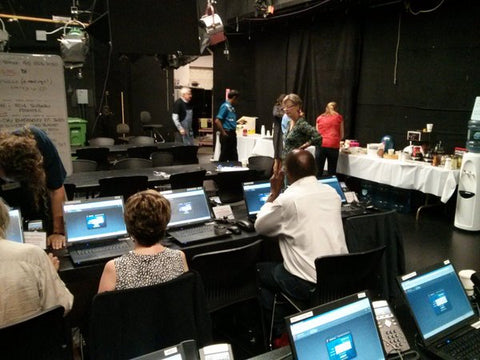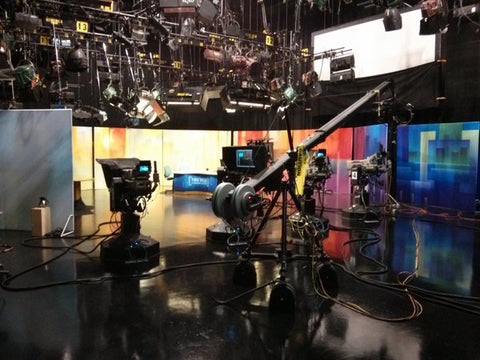Nearsights Monocles on NPR!
If you're in the Bay Area, and were listening to KQED on Friday 09/06, then you might have heard Nearsights Monocles mentioned on NPR!
I donated 20 monocles to our local NPR station in exchange for some on-air coverage of our products. The donation worked out well for both of us, and I look forward to being back on KQED soon!
As part of the experience I answered phones during two pledge breaks - two of you who called in looking for monocles go to speak to me directly - and I also got a tour of the KQED studios. If you liked my previous "behind-the-scenes" posts, then you'll enjoy the pictures below.
This was one of the easiest volunteer activities I've ever participated in. Pledge breaks are only 8 minutes long, so you only really have time to speak to two or three people before it's over. You get unlimited drinks and snacks, and also a backstage tour of the studios. It's a very easy and fun way to give back to the community.
It's so easy to watch TV or listen to the radio and forget the people who are at work behind the scenes making things happen. Directors, technicians, makeup, cameras, writers, sales people, engineers, and on... Like most consumer goods we focus on the product (in this case the talent) and forget how many other people are involved. How many people do you think it takes to make an iPhone? A monocle?
This is a picture of our "nerve center;" there is space for about 40 people to work the phones, and the whole thing is setup in a TV sound stage. When KQED runs television pledge drives they happen here, and people working the phones are often in the background shots. All of the volunteers were friendly and interested in learning more about monocles. One person even asked, "Monocles?! Do they even make those anymore?"

On the other side of the wall is the studio below. This one was being setup for one of an evening news program. Note that there are no camera men - all the cameras are operated via remote control from the "nerve center" across the hall. During filming there is usually only one off-camera person in this room. Apparently KQED is the last media company in the Bay Area to go fully remote with cameras. Just a few months ago there would have been 5 people working this room during the broadcast.

Here's the "nerve center" where the director and technicians sit and coordinate the live shots as the program airs. During a live broadcast the director will see all incoming video (from the 5+ cameras in the studio, and any cameras on-location and connected via satellite) and two final outgoing streams (one live and one backup) as well as any other video that he/she may want to splice in. There is a lot of information being presented here.

And finally, one of the many radio studios that KQED has here in San Francisco. This studio has room for 3 speakers. Not surprisingly, it's much simpler than the TV studio.

And that concludes the tour. I'll have some more pictures for you after out next media spot. Have a great week!
Next →
← Previous






